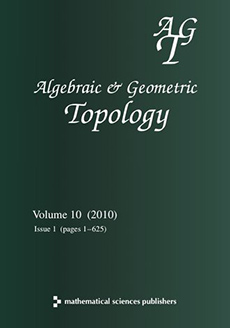Abstract
Let be a Morse–Bott function on a finite-dimensional closed smooth manifold . Choosing an appropriate Riemannian metric on and Morse-Smale functions on the critical submanifolds , one can construct a Morse chain complex whose boundary operator is defined by counting cascades [Int. Math. Res. Not. 42 (2004) 2179–2269]. Similar data, which also includes a parameter that scales the Morse-Smale functions , can be used to define an explicit perturbation of the Morse-Bott function to a Morse-Smale function [Progr. Math. 133 (1995) 123–183; Ergodic Theory Dynam. Systems 29 (2009) 1693–1703]. In this paper we show that the Morse–Smale–Witten chain complex of is the same as the Morse chain complex defined using cascades for any sufficiently small. That is, the two chain complexes have the same generators, and their boundary operators are the same (up to a choice of sign). Thus, the Morse Homology Theorem implies that the homology of the cascade chain complex of is isomorphic to the singular homology .
Citation
Augustin Banyaga. David E Hurtubise. "Cascades and perturbed Morse–Bott functions." Algebr. Geom. Topol. 13 (1) 237 - 275, 2013. https://doi.org/10.2140/agt.2013.13.237
Information





